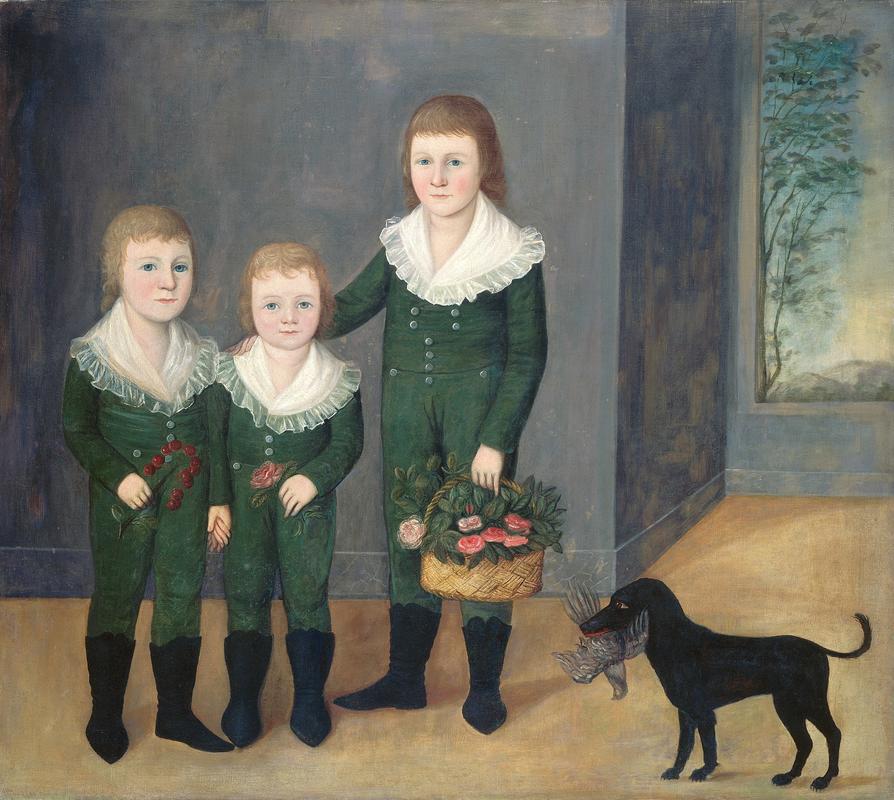More about The Westwood Children

Contributor
These kids may seem creepy to us, but the people it was painted for probably didn't care
The portrait may seem like kind of a bad likeness at first: it’s what art historians tend to call “flat” or “naive," alluding to a perceived lack of skill in depicting three-dimensional reality on the part of the artist. The painter, Joshua Johnson, was a somewhat itinerant, self-taught artist. He painted the families of the late 18th and early 19th century Maryland middle and upper middle classes, often painting children specifically. Some folk portraits, like those by Johnson, seem to lack a depth of emotion and personality commonly attributed to grand manner portraits by Benjamin West or John Trumbull. But at the end of the day, personality may not have been the goal here.
There’s strong evidence to suggest that the patrons of itinerant and self-taught artists throughout colonial and federal America saw portraits as an opportunity to have a visual representation of their loved ones, and to project status and wealth. In an age before photography, just simply having an image of you or someone in your family was a big deal. Johnson himself is sometimes known as the “brass tacks painter” because of the careful attention he paid in depicting fashionable furniture in his work. The “skeleton” suits these boys wear was all the rage for boys in 1807, and the detailed execution of the garments shows the importance of highlighting fine and fashionable goods. Basically just showing off to make the neighbors jealous.
This painting also provides an insight into the expectations placed on children growing up in the early 19th century. The presence of a dog, seen in this painting in the bottom right, is often included in portraits of little boys and is meant to communicate their eventual role as masters of their own households. Interestingly, all three boys hold flowers, usually associated with portraits of girls, which symbolize communion with the land and fruitfulness. Between the dog, the flowers, and the nice clothes, this portrait shows the importance of the many aspects of refinement and gentility within early American culture.
Sources
- Barratt, Carrie Rebora. "Nineteenth-Century Folk Art." Heilbrunn Timeline of Art History. https://www.metmuseum.org/toah/hd/afkp/hd_afkp.htm.
- Reif, Rita. "ANTIQUES; New Attention for Early Black Artist." The New York Times, February 7, 1988. https://www.nytimes.com/1988/02/07/arts/antiques-new-attention-for-earl….
- "Joshua Johnson." Smithsonian American Art Museum. https://americanart.si.edu/artist/joshua-johnson-2479.











